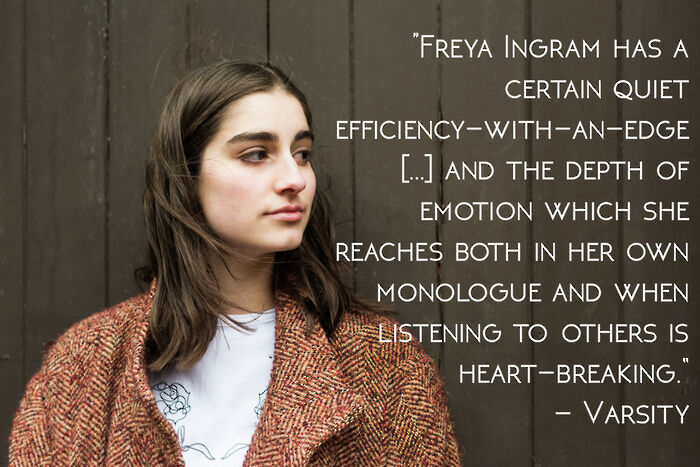Final Cut review
An engaging, well-executed, and hilarious character comedy

“'Final Cut'?” says John, “That’s a bit of a stupid name.”
“Ah,” says James, “They probably came up with the title before the content.”
Whatever they might joke, however, this character comedy from Footlights James Coward and John Tothill is far from haphazard. In fact, it’s a pleasure to hear an hour of comic dialogue which is so tight, engaging and well-pitched. The first thing to know about Final Cut if you’re considering catching it at the Edinburgh Fringe, is that every line lands. As the duo arrive onstage to address the audience, with grave eyes and comically fruity accents, the packed room is already giggling, convinced that Coward and Tothill know what they’re doing. The proceeding hour of sharply-written bits and sketches doesn’t disappoint.
"It’s a pleasure to hear an hour of comic dialogue which is so tight, engaging and well-pitched."
The show’s vehicle is a dialogue-based memorial service for the fictional Sir Trevor Brierly, a celebrated director whose friends, Michaelmas Crouch and Patio Horse (Tothill and Coward), reflect on everything from his Carol Ann Duffy-inspired poetry to his son’s cocaine habit. The pair inhabit these absurdly-named, but familiar, theatre-world characters with easy relish and convincing physicality (them taking their seats is one of the early highlights of the show). Although the anecdotes they tell are frequently ridiculous, Crouch and Horse (and many of the other characters that Tothill and Coward bring into the service) are modelled on identifiable types. They navigate their own over-the-top pomposity and the absurdity of the world they construct with a likable, sometimes pitiable, sincerity, and well-timed repartee.
This dialogue is funny and practiced enough to form the foundation and structure of the show, but the range of Coward and Tothill’s character comedy is proven by the integrated sketches. In these pieces, which take forms such as film clips, live interviews and Skype calls, they simulate a familiar collection of eccentrics with knowing attention to detail. As we trace Sir Trevor’s unwieldy biography, we encounter gurning amateur dramatics students, buffoonish agents and an especially accurate Louis Theroux. None of these seem pivotal to the deceased’s life story, but all are satirically played for a great many laughs. The balance between playing a recognisable figure and exaggerating them into parody is well-struck. In one of the highlights of Final Cut, this duality culminates in a deadpan interview with James Coward’s self-conscious cat theatre director, who explains to the interviewer all the reasons why cat theatres don’t work.
Although ostensibly centred around the absent Sir Trevor, Final Cut is mostly about all the other characters Coward and Tothill can play, and the bizarre theatrical world they use them to construct. This story is engaging and confidently hilarious. The script is expertly written and the timing of its pay-offs, of the comics’ delivery, and of the tech which worked without a hitch, proves that it’s also very well rehearsed. It’s hard to imagine how Final Cut might be improved between now and the Edinburgh Fringe in August, but it will inarguably be worth going to see.
 Comment / Cambridge’s tourism risks commodifying students18 April 2025
Comment / Cambridge’s tourism risks commodifying students18 April 2025 News / Varsity ChatGPT survey17 April 2025
News / Varsity ChatGPT survey17 April 2025 News / Cambridge researchers build tool to predict cancer treatment success19 April 2025
News / Cambridge researchers build tool to predict cancer treatment success19 April 2025 News / Cambridge researchers find ‘strongest evidence yet’ of life on distant exoplanet18 April 2025
News / Cambridge researchers find ‘strongest evidence yet’ of life on distant exoplanet18 April 2025 News / Greenwich House occupiers miss deadline to respond to University legal action15 April 2025
News / Greenwich House occupiers miss deadline to respond to University legal action15 April 2025






